
-
Find the right food for your petTake this quiz to see which food may be the best for your furry friend.Find the right food for your petTake this quiz to see which food may be the best for your furry friend.Featured products
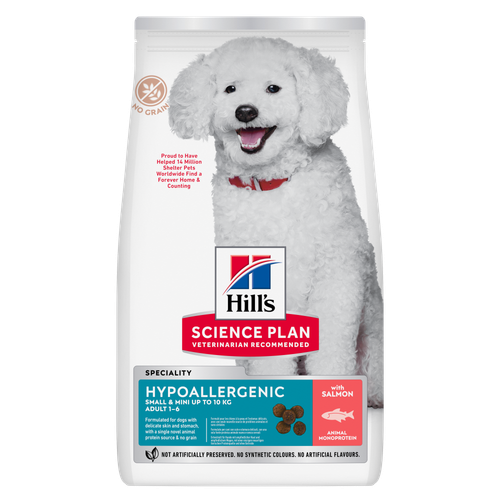 Hypoallergenic Small & Mini Adult Dog Food
Hypoallergenic Small & Mini Adult Dog FoodHILL'S SCIENCE PLAN Hypoallergenic Small&Mini Adult dog food with Salmon is complete pet food for adult small dogs 1–6 years old. It's formulated for dogs with delicate skin and stomach, with limited high quality novel protein sources & no grain.
Shop Now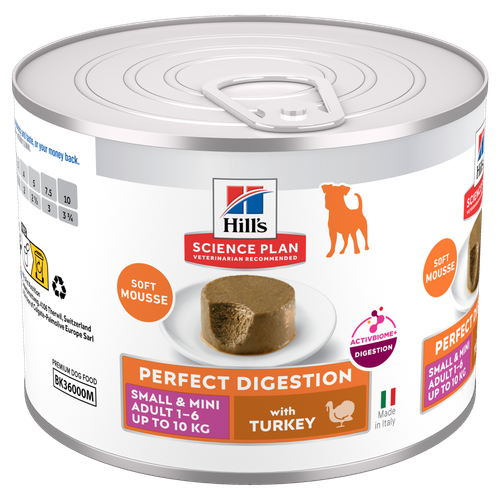 Perfect Digestion Small & Mini Adult Dog Food
Perfect Digestion Small & Mini Adult Dog FoodHill's Science Plan Perfect Digestion Small & Mini Adult Dog Food with Turkey is a complete premium pet food for small breed adult dogs aged 1–6 years. This deliciously smooth mousse is precisely balanced to deliver the appropriate amount of energy and to support digestive health in adult, small breed dogs.
Shop Now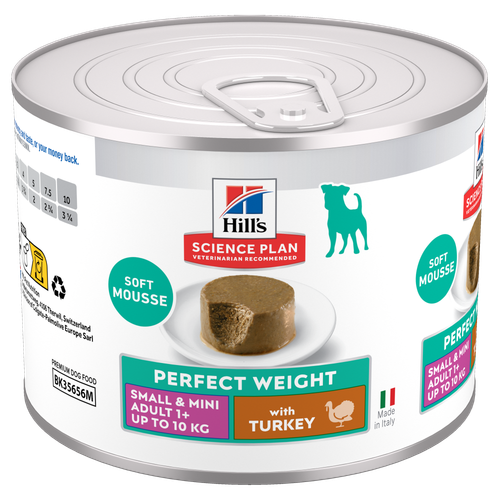 Perfect Weight Small & Mini Adult Dog Food
Perfect Weight Small & Mini Adult Dog FoodHill's Science Plan Adult Small & Mini Dog Food with Turkey is a complete premium pet food for adult small dogs from 1 year old that are prone to weight gain or slightly overweight. This deliciously smooth mousse is formulated to deliver the appropriate amount of energy to support weight maintenance in adult dogs.
Shop NowFeatured products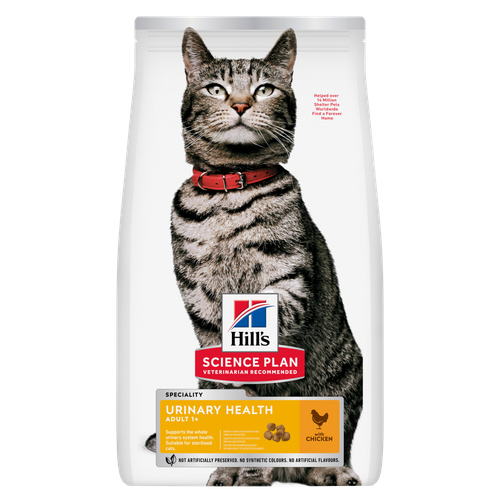 Urinary Health Adult Cat Food with Chicken
Urinary Health Adult Cat Food with ChickenHill's Science Plan Urinary Health Adult Cat Food with Chicken supports the health of the whole urinary system. Suitable for sterilised cats.
Shop Now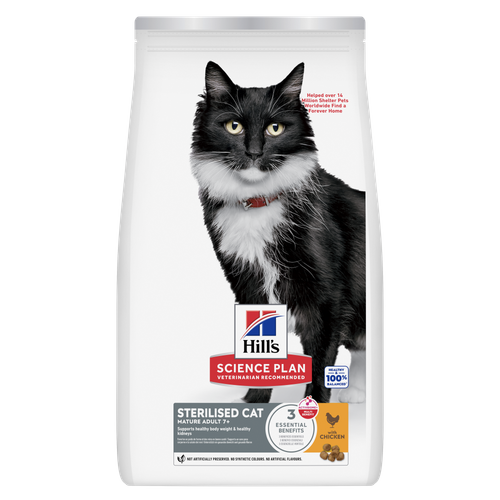 Sterilised Mature Adult Cat Food
Sterilised Mature Adult Cat FoodHill's Science Plan Sterilised Cat Mature Adult Cat Food with Chicken is specially formulated with ActivBiome+ Multi-Benefit Technology. It is a precisely balanced nutrition tailored to meet the needs of mature adult sterilised cats, ages 7+, and to promote graceful ageing.
Shop Now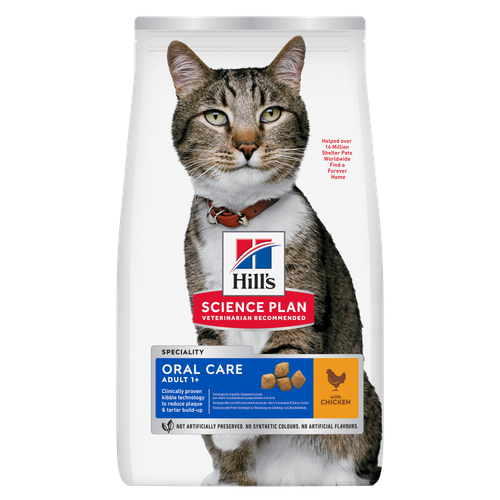 Oral Care Adult Cat Food
Oral Care Adult Cat FoodHill's Science Plan Oral Care Adult Cat Food with Chicken contains clinically proven kibble technology to reduce plaque & tartar build up.
Shop Now -
Dog
- Dog Tips & Articles
-
Health Category
- Weight
- Food & Environmental Sensitivities
- Urinary
- Digestive
- Joint
- Kidney
-
Life Stage
- Puppy Nutrition
- Adult Nutrition
- Senior Nutrition
Cat- Cat Tips & Articles
-
Health Category
- Weight
- Skin & Food Sensitivities
- Urinary
- Digestive
- Kidney
-
Life Stage
- Kitten Nutrition
- Adult Nutrition
Featured articles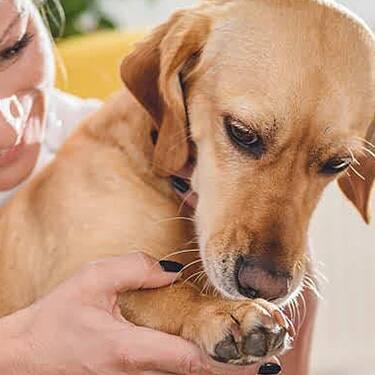 Virtual Vet Visits: What You Need to Know
Virtual Vet Visits: What You Need to KnowLearn the ins and outs of a televet appointment before you talk to a vet online.
Read More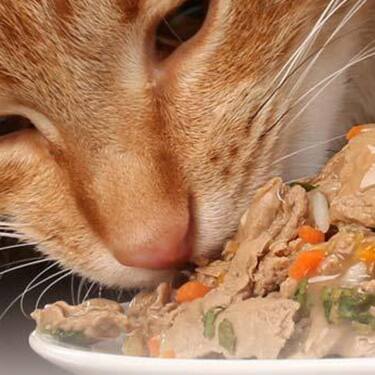 Tips For Mixing Wet And Dry Pet Food
Tips For Mixing Wet And Dry Pet FoodDiscover tips for mixing wet and dry pet food to ensure balanced nutrition and variety for your pet. For comprehensive feeding advice, visit Hill's Pet UK.
Read More Develop your gut instinct | Hill's Pet
Develop your gut instinct | Hill's PetDigestive disorders can affect any part of the digestive system, from the stomach, small intestine and through to the large intestine.
Read More -


While vomiting and diarrhea are usually easy to spot in our dogs and cats, constipation can easily go unnoticed. Also, unlike vomiting and diarrhoea, constipation may not seem like something we need to worry too much about. However, it can be a sign of other issues, can make your cat or dog uncomfortable and even depressed so it does need to be addressed. In this article we’ll be looking at what causes constipation in dogs and cats, how you can tell if your pet is constipated and what is the best way to relieve constipation or colitis in dogs and cats.
What causes constipation in dogs and cats?
Constipation is when you get a buildup of faeces in the colon and it is reluctant to come out! There could be a number of causes depending on the animal. Sometimes your dog or cat might have been given or stolen/caught some food that has caused the stools to be much more solid than normal. This could be things like carcasses, bones, antler horns or foreign objects like socks which have managed to go through the guts but then got stuck.
Other times it may be that for some reason their gut movement has slowed down. This means that the stools spend more time in the gut and have more water taken out by the intestines. The stools become very dry and hard and can be difficult to shift. If not addressed this can become what is called obstipation. This is where an animal can’t pass stools and the intestines never empty and it can become a real emergency. A classic example of this is called megacolon in cats. Certain cats like the Siamese are prone to this and it can be a big issue.
Constipation and obstipation can also be because something else in the abdomen is pressing on the bowel and physically stopping the faeces coming out. For example, an enlarged prostate gland or a tumour. So how do you know if our dog or cat is constipated?


Tasty Tips
Young pets may need several visits in their first year for vaccinations. Adult pets generally benefit from annual check-ups, while senior or special-needs pets might require more frequent visits.
Signs of constipation in dogs and cats.
Most obviously constipation shows itself as a dog or cat trying to have a poo but nothing happening. They tend to strain and keep getting into the position to pass faeces but can’t manage. Sometimes they’ll pass a little nugget or you may see mucus if the dog or cat has colitis. If your cat goes outside to go to the toilet it can be very difficult to tell if they are constipated until they start to feel really bloated and miserable.
Most of us will have been constipated at some point and we can empathise with that bloated feeling as everything starts to back up. Constipation for more than a few days can actually make us, and our cats and dogs feel quite uncomfortable and ill.
What to give a dog or cat that is constipated.
As I said, constipation is often not a serious issue and may resolve on its own after a day or two. You can try to help by increasing the water in your pet’s diet to start with by soaking kibble or adding extra water to their wet food. Giving a higher fibre food can sometimes help too but always talk to your vet before switching foods as in some cases like advanced megacolon or a bony impaction fibre could make it worse. There are also some over-the-counter pet laxatives that could help. The main thing is not to let it go on too long because if there is an underlying cause the longer it’s left the more damage might be done. Particularly if your cat or dog seems in pain, depressed or confused or you see blood then you should get to the vet as soon as possible. Also if the constipation is recurrent.
Some owners worry about wasting the vet’s time but as I always say to my clients we would much rather see an animal for no reason than possibly miss something and find that it’s too late. We are there for your peace of mind as much as for your animal’s health and wellbeing so don’t be afraid to ask.


One of our staff authors prepared this article for you
Related products

HILL'S SCIENCE PLAN Hypoallergenic Small&Mini Adult dog food with Salmon is complete pet food for adult small dogs 1–6 years old. It's formulated for dogs with delicate skin and stomach, with limited high quality novel protein sources & no grain.
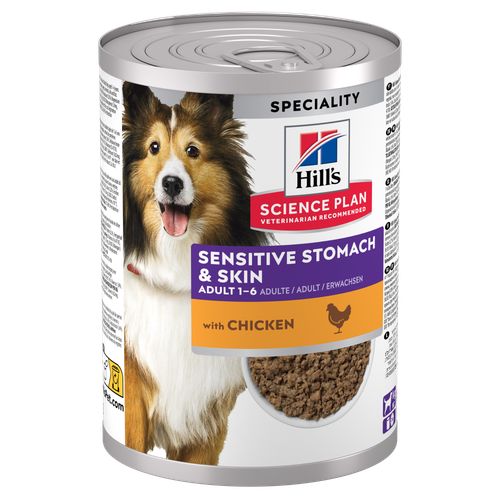
Hill's Science Plan Sensitive Stomach & Skin Adult Wet Dog Food with Chicken is a complete premium dog food for adult dogs from 1 year. This savoury tinned loaf is enriched with ingredients that support digestive health & skin care.

Hill's Science Plan Perfect Digestion Small & Mini Adult Dog Food with Turkey is a complete premium pet food for small breed adult dogs aged 1–6 years. This deliciously smooth mousse is precisely balanced to deliver the appropriate amount of energy and to support digestive health in adult, small breed dogs.

Hill's Science Plan Adult Small & Mini Dog Food with Turkey is a complete premium pet food for adult small dogs from 1 year old that are prone to weight gain or slightly overweight. This deliciously smooth mousse is formulated to deliver the appropriate amount of energy to support weight maintenance in adult dogs.
Related articles

Discover tips for mixing wet and dry pet food to ensure balanced nutrition and variety for your pet. For comprehensive feeding advice, visit Hill's Pet UK.

Digestive disorders can affect any part of the digestive system, from the stomach, small intestine and through to the large intestine.

Monitoring your pet’s body condition score (BCS) can help you help your pet maintain proper growth and weight for a long, healthy life.

Learn the ins and outs of a televet appointment before you talk to a vet online.

Put your pet on a diet without them knowing
Our low calorie formula helps you control your pet's weight. It's packed with high-quality protein for building lean muscles, and made with purposeful ingredients for a flavourful, nutritious meal. Clinically proven antioxidants, Vitamin C+E, help promote a healthy immune system.
Put your pet on a diet without them knowing
Our low calorie formula helps you control your pet's weight. It's packed with high-quality protein for building lean muscles, and made with purposeful ingredients for a flavourful, nutritious meal. Clinically proven antioxidants, Vitamin C+E, help promote a healthy immune system.

